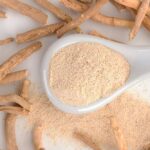Breasts, like any other part of the body, change over time, and for many women, sagging breasts—medically known as ptosis—become a common concern. While it is a completely natural part of aging, various other factors contribute to how and why breasts may sag. In this blog, we will explore the main causes of sagging breasts, helping you understand the science behind it and how lifestyle choices can affect breast shape and firmness.
1. Aging: The Natural Process
One of the primary causes of breast sagging is aging. As women get older, the body undergoes various hormonal changes that impact breast tissue. The two main components of breast tissue are glandular tissue (which produces milk) and fat tissue (which gives breasts their size and softness). As you age, the glandular tissue often shrinks, and fat deposits increase, which can lead to a less firm and more droopy appearance.
Additionally, skin elasticity decreases over time, meaning that the ligaments supporting the breasts—specifically the Cooper’s ligaments—become weaker. These ligaments are responsible for keeping the breasts lifted, and as they lose strength, the breasts may begin to sag. This process is usually most noticeable after menopause when the body experiences a decline in estrogen, a hormone that helps maintain breast structure.
2. Pregnancy and Breastfeeding
Pregnancy and breastfeeding are major life events that significantly affect breast shape. During pregnancy, the body undergoes numerous changes to prepare for breastfeeding, including the enlargement of the breasts due to increased glandular tissue. However, after childbirth and weaning, the tissue may not always return to its pre-pregnancy state, leading to sagging.
Additionally, breastfeeding itself can also contribute to the stretching of the skin and ligaments. Frequent milk production and the engorgement of the breasts can stretch the skin, and although some women experience the breasts returning to their original shape after nursing, others may notice that the skin has lost its firmness, contributing to sagging.
3. Weight Fluctuations
Frequent and significant weight fluctuations can also lead to sagging breasts. When a person gains weight, the breasts often enlarge due to an increase in fat deposits. Conversely, rapid weight loss, especially through methods like extreme dieting or surgery, can cause the skin to lose its elasticity and firmness. The breasts, made up mostly of fatty tissue, may not shrink back to their previous size, causing them to sag.
For women, maintaining a stable weight over time can help avoid these changes, although it is important to note that some degree of sagging is inevitable due to the natural aging process and gravity.
4. Genetics
Your genetics play a substantial role in determining how your breasts will age. Some women may be predisposed to have firmer, more youthful-looking breasts for longer periods, while others may experience sagging at an earlier age. Genetic factors influence the structure and elasticity of the skin and ligaments, the size and density of the breast tissue, and even the shape of the breasts. If your mother or grandmother experienced sagging breasts early in life, there may be a higher likelihood that you will too.
5. Gravity
Gravity is a constant force acting on all objects, and your breasts are no exception. Over time, the downward pull of gravity causes the ligaments and skin to stretch, especially as the breasts become larger or heavier. This can lead to the breasts losing their lift, resulting in a sagging appearance. For women with larger breasts, the effect of gravity can be more pronounced, causing more noticeable sagging as the years go by.
6. Lack of Support
Wearing insufficient breast support can also contribute to sagging. A well-fitted bra is essential for providing adequate support, especially during physical activities. Without proper support, the ligaments in the breasts can be stretched over time, which contributes to sagging. Many women experience breast tissue stretching as a result of exercising without a supportive sports bra or wearing a bra that doesn’t properly fit.
7. Lifestyle Choices and Habits
Certain lifestyle choices and habits can also impact the health and appearance of your breasts. For example:
- Smoking: Smoking reduces blood flow to the skin and weakens the connective tissues, including the ligaments in the breasts. This can accelerate the sagging process.
- Sun exposure: Excessive sun exposure can damage the skin and reduce its elasticity, leading to premature sagging.
- Poor diet: A lack of nutrients, particularly those that support skin health (like vitamin C and collagen), can also contribute to loss of firmness in the breasts.
8. Hormonal Changes
Hormonal changes, particularly those related to menopause, can have a significant impact on breast sagging. Estrogen is crucial for maintaining the skin’s elasticity and supporting the ligaments that hold the breasts up. When estrogen levels decrease during menopause, the skin and ligaments lose some of their strength, contributing to sagging.
Can You Prevent Sagging Breasts?
While some factors, like aging and genetics, are beyond your control, there are steps you can take to minimize the impact of sagging. Wearing a supportive bra, maintaining a stable weight, eating a balanced diet, and avoiding smoking are just a few ways to keep your breast tissue healthier for longer. For some women, breast lifts in Salt Lake City or implants are a viable option to restore a more youthful appearance if sagging becomes a significant concern.
In Conclusion
Sagging breasts are a natural part of life, influenced by various factors including aging, pregnancy, weight fluctuations, genetics, and gravity. While you can’t entirely stop the process, understanding these causes allows you to take steps that can minimize the effect and help maintain breast health for longer. Whether it’s wearing the right support or making healthier lifestyle choices, small changes can make a big difference in how your breasts age over time.


